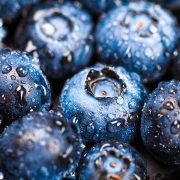Top 10 Things to Make Your Key Race More Successful
1. Taper.
If you have followed your plan, you are trained. Realize that you are NOT going to gain any more fitness or speed before your big race. However, you CAN negatively affect both if you panic and try to “squeeze” in one more high intensity workout. The body needs the opportunity to “absorb” the workloads that you have subjected the body to in the form of intensity, volume and frequency. To race to your full potential you need to come into the race feeling fresh – mentally and physically. A rule of thumb is to come into your high profile races one percent undertrained, rather than one percent over trained. If you are over trained, even by one percent, you will not be resilient to the challenge of a typical race week: heat, humidity, loaded competition, setbacks, frustrations, rain, etc.
2. Identify your sweat rate to avoid over or under hydration.
You need to know how much sweat you lose during a high intensity effort in the humidity and temperatures you plan to race in. Though this may sound obvious (and even difficult to implement for most people), this will help eliminate two significant problems during race week: dehydration and hyponatremia. Dehydration is when your body loses too much water in the way of sweat. You don’t want to lose more than 3-4% of your total body weight (including the amount of fluids you consumed prior to the race). Send us an email at Contact@CoachRobb.com to receive a copy of our Sweat Rate Calculator. Hyponatremia is when you consume more water than your body can absorb and properly hydrate the body. Walking around with a gallon of straight water is the quickest way to over-hydrate and become physically ill. When the body is over hydrated, you will feel nauseous, dizzy and have little to no energy.
3. Determine your nutrition and hydration plan.
Prior to your race you need to plan and test your nutrition and hydration. If you are bonking or experiencing gastrointestinal issues, then you know that what you are eating or drinking is not working and you need to reevaluate. Testing is key to developing a solid plan that will work for you on race day.
4. Establish an effective warm up.
To avoid using the first 10 minutes of your race to get your body up to your full race speed, you need to come to the starting line warmed up. There are a few physiological adaptations that your body will go through, but understand that if you are warmed up sufficiently, your muscles will embrace the high intensity levels right from the beginning of the race. A proper warm up will not only increase your speed, but will offset the potential for fatigue later in the race because the muscles and energy systems are working efficiently.
5. Learn to breathe.
Though this skill may sound odd, the ability to maximize your oxygen uptake is the foundation for speed AND endurance. Click here to watch a video on how to learn how to breathe properly. Once you can breathe deep through your belly in a relaxed setting (i.e. when you are lying down to go to sleep), you can begin to implement during your training and racing. This is a simple drill and skill to learn with huge rewards!
6. Get a therapeutic massage rather than deep tissue.
Avoid deep tissue massage prior to a race. The residual soreness and inflammation associated with deep tissue is completely contrary to what your body needs while you are peaking for your key race. Though deep tissue work is counterproductive for peak performance prior to a race, therapeutic massage is beneficial because it will help the tissue relax (you will sleep better) and improve range of motion within the muscles and associated joints. A good massage therapist will help you identify any overly tight muscle(s) which will maximize your stretching and soft tissue efforts.
7. Nothing new.
Don’t try anything new the week of your race. If you haven’t consumed something in training and have concrete evidence that the food you are eating will yield a positive result, don’t eat it, especially the night before your race! Many adverse reactions can result from introducing new foods: dehydrations, diarrhea, nausea and low energy levels.
8. Establish a schedule to avoid rushing.
One of the biggest energy robbers on race day is rushing around the morning of to get to the starting line. Once the race schedule is established, sit down and create a daily schedule including sleep, eating, warm-up, race and post race recovery. You need to know where you need to be and when and then stick to the schedule. Sounds basic, but this task will save you energy when you are doing exactly what you “planned” to be doing. You will be both more productive (because you are focused) and less stressed (because you have a little bit of extra time in case something goes wrong).
9. Eat real food.
Avoid eating anything that comes out of a box and instead snack on real food: fruits, vegetables and lean sources of protein. Fresh fruits and vegetables are high in water and natural electrolytes – both imperative for optimum performance. Lean protein sources will provide your body with the necessary amino acids to replenish the torn down muscles associated with high intensity racing.
10. Don’t carbo load.
The quickest way to throw you off of your race game is to follow the old theory of “Carbo-Loading”. What you may not know is that to store one gram of carbohydrates in your body (you store sugar in your body in the form of glycogen and you store it within your muscles and liver) your body stores 2.5 grams of water. So, if you “load up” on carbs, you can easily add 3-5 pounds in extra water – overnight. Think about strapping a five-pound dumbbell to your waist and hit the starting line. The added weight will throw your form off and you won’t even understand why. [Note: your liver fuels your brain when you sleep and your muscles fuel your racing efforts.]



